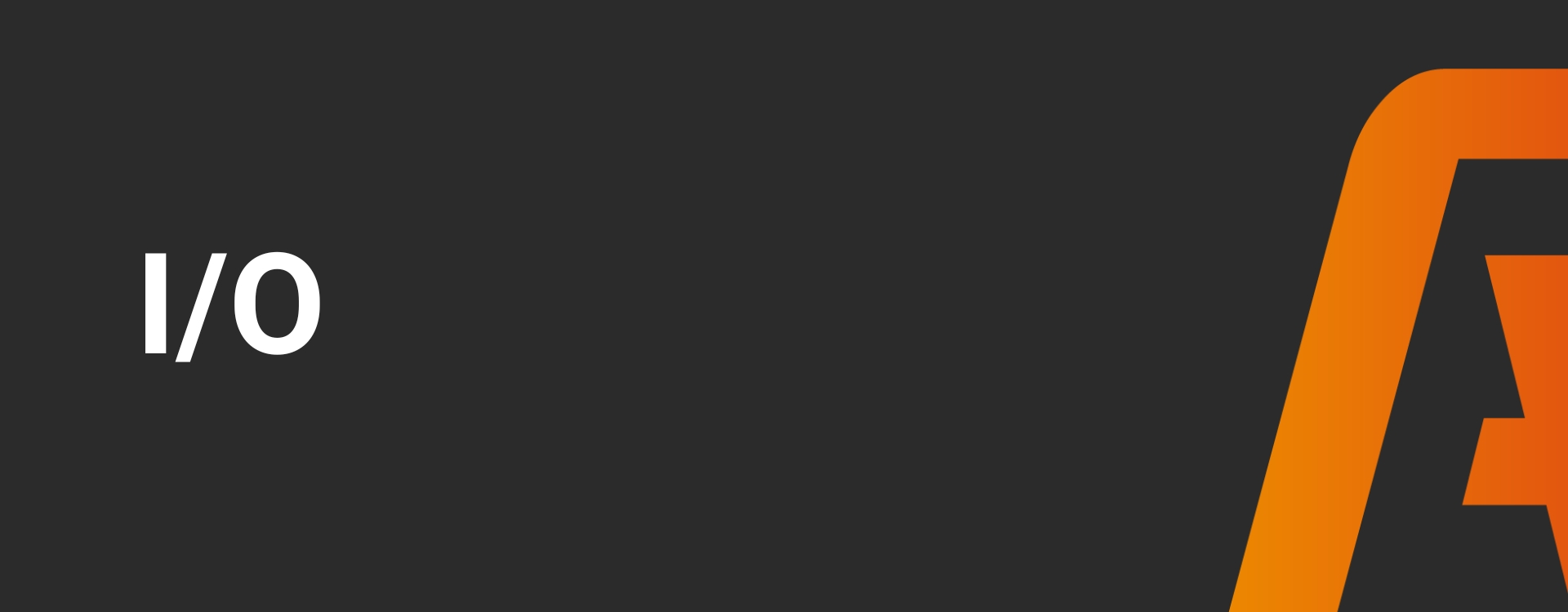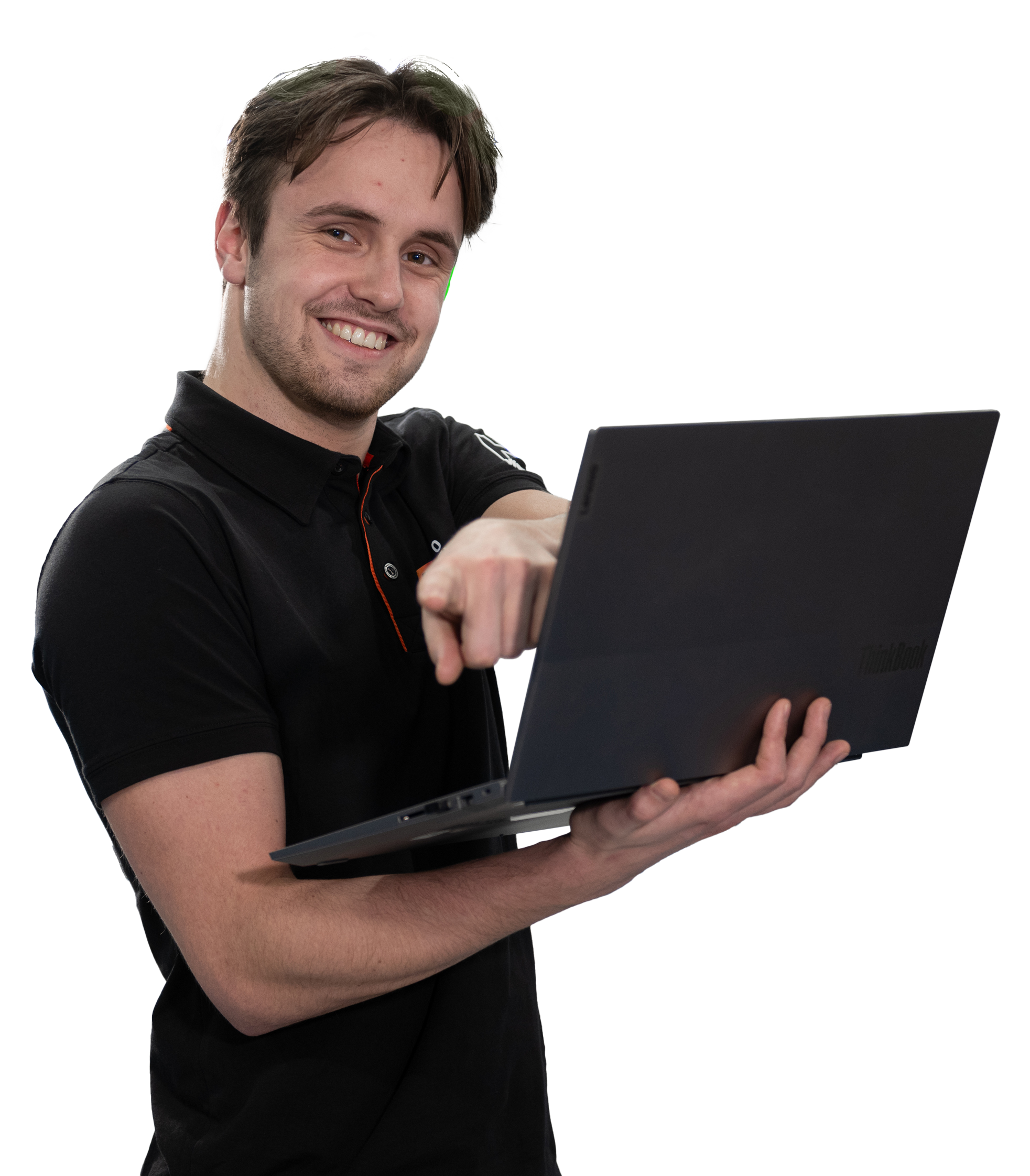» What is I/O?
» How does I/O work?
» Local vs. Remote I/O
» What are the benefits of I/O in industrial automation?
» What types of input devices are there?
» And what types of output devices are there?
» What is the role of an I/O interface?
» What is I/O scheduling?
» Ready to master your growth?
Other knowledge base articles

I/O
» What is I/O?
» How does I/O work?
» Local vs. Remote I/O
» What are the benefits of I/O in industrial automation?
» What types of input devices are there?
» And what types of output devices are there?
» What is the role of an I/O interface?
» What is I/O scheduling?
» Ready to master your growth?
What is I/O?
In industrial automation, I/O (Input/Output) refers to the connections between the sensors and actuators placed in the field and the controllers that manage the process.
Input is the information collected by sensors, such as temperature, pressure, current, level, or position. These signals are converted into digital signals and sent to the controller for further processing.
Output includes the signals that the controller sends to the actuators, such as motors, valves, pumps, or lighting. The actuators interpret these signals and use them to perform physical actions that control the process.
I/O systems often implement digital or analog signals transmitted via wired or wireless connections. Modern systems use advanced communication protocols to transmit and receive data between the I/O components and the controllers.
By integrating the I/O components with the controllers, industrial automation systems are able to optimize the production process, improve efficiency, increase measurement accuracy, and enhance production reliability.
How does I/O work?
Here is a step-by-step process for how I/O works in industrial automation:
- Sensors gather data about the monitored equipment or process, such as temperature, pressure, current, level, or position.
- The sensors convert this data into electrical signals, which they then transmit via wiring to the I/O components.
- These components receive the signals and transmit them to the controller via a communication protocol.
- The controller processes the data and determines the status of the monitored equipment or process.
- The controller then sends commands via the I/O components to the actuators to perform physical actions, such as starting or stopping a motor or opening or closing a valve.
- The actuators execute these commands and send feedback via the I/O components to the controller to confirm that the actions have been performed.
- The controller uses the feedback to update the status of the equipment or process and continues to monitor the process.
- This process repeats continuously to continue monitoring the equipment or process and ensure that it remains functioning correctly.
Local vs. Remote I/O?
These forms refer to the physical location of the I/O components in an industrial automation system. Local refers to the components that are physically close to the controller, for example, in the same enclosure or panel. These components are directly connected to the controller via cables and are managed by the same controller. This type of I/O is typically fast and reliable due to the short distances and absence of communication protocols.
Remote refers to the components that are physically further from the controller, for example, at different locations or in different rooms. These components are connected to the controller via communication protocols and are located at varying distances from the controller. This type of I/O is usually slower than Local due to the additional communication layers and the longer distances between the components.
What are the benefits of I/O in industrial automation?
- Efficiency: Allows for faster data collection, processing, and communication, enabling industrial processes to be carried out more efficiently.
- Flexibility: Easy to configure and adapt to different industrial applications, making them flexible and adaptable to changing requirements.
- Reliability: Designed to be reliable, they are resistant to harsh environments and failures, reducing the likelihood of downtime or malfunctions.
- Cost-saving: The implementation of automated systems contributes to cost savings by reducing the need for manual labor and increasing productivity.
- Safety: Enables hazardous and risky tasks to be performed remotely, improving worker safety and reducing the risk of accidents.
- Real-time monitoring: Provides operators and managers with better insight into system performance, enabling them to make better decisions.
What types of input devices are there?
In industrial automation, there are various types of input devices for I/O communication, depending on the application and the process to be automated. Here are some common input devices:
- Sensors: Measure physical quantities such as temperature, pressure, level, position, and motion. They gather data about the process and the environment.
- Switches: Send signals to control systems to perform specific actions, such as starting, stopping, activating a motor, or a valve.
- Pushbuttons: Enable manual operation of the process, such as starting a machine or opening a valve.
- Encoders: Measure and control the position and motion of axes or motors.
- Vision systems: Use image processing technology to detect and identify objects and their characteristics.
Other examples of input devices in industrial automation include RFID readers, thermometers, flow meters, magnetic sensors, etc.
And what types of output devices are there?
In industrial automation, there are various types of output devices for I/O communication, depending on the application and the process to be automated. Here are some common output devices:
- Actuators: Perform mechanical actions such as opening and closing valves, rotating motors, etc.
- Pumps: Move fluids or gases within the process.
- Valves: Control the flow of fluids or gases within the process.
- Displays: Show information about the process, such as sensor values, machine status, etc.
- Signal devices: Provide acoustic or visual signals, such as sirens, alarms, lights, etc.
Other examples of output devices in industrial automation include solenoid valves, relays, electromagnets, LED lights, etc.
What is the role of an I/O interface?
An I/O interface plays a crucial role in the process of I/O communication between digital devices and the external world. It serves as a connection point between input and output devices and the rest of the computer system or automated system.
The primary role of an I/O interface is to convert the electrical signals and data coming from the input or output devices into a format that the system can process, and to send the processed data back to the output devices in the required format. This involves signal processing, data decoding, and allocating input and output channels to the appropriate processes or applications in the system.
An I/O interface is also capable of performing tasks such as buffering data to reduce the load on the system, providing protection against system overload, and performing error detection and correction. They can take on various forms, such as serial, parallel, wireless, or optical interfaces, depending on the type of input and output devices and the requirements of the system.
What is I/O scheduling?
I/O scheduling is the process of managing input/output requests in an operating system. When a program or user submits I/O requests (such as reading from or writing to a file), the operating system must manage and prioritize these requests to provide efficient and fair utilization of system resources.
The I/O scheduler is responsible for determining the processing order of I/O requests and the amount of time allocated to each request. There are several scheduling algorithms that can be used, depending on the specific needs of the system and the types of I/O requests.
Some commonly used I/O scheduling algorithms include:
- First Come, First Serve (FCFS): The algorithm processes requests in the same order they are received, meaning older requests take precedence over newer ones.
- Round Robin (RR): The algorithm processes requests in a cyclic order, with each request given a fixed amount of time to complete.
- Shortest Seek Time First (SSTF): The algorithm processes the request that is closest to the current position of the disk head first.
- Deadline-Based Scheduling: The algorithm prioritizes requests based on their deadline for completion, processing the most urgent requests first.
By effectively managing I/O requests, I/O scheduling improves the overall performance and efficiency of a computer system.

Ready to master your growth?

